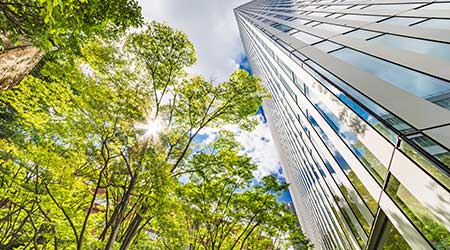In our journey towards a sustainable future, it has become crucial for businesses and organisations to adopt energy-efficient solutions. One critical aspect that gained our attention is sustainable facilities management. It is a holistic approach to managing buildings and spaces. This approach reduces environmental impact and ensures the well-being of occupants and communities.
Read on to explore sustainable facilities management’s role in creating a greener future and its essential aspects. But before that, let us understand what sustainable facilities management is.
What is Sustainable Facilities Management?
Sustainable Facilities Management is a multifaceted discipline that minimises the ecological footprint of buildings, maximising efficiency and well-being. It focuses on integrating environmentally friendly practices into facility planning, design, construction, and operation. This approach can create a harmonious balance between environmental responsibility and human comfort.
Energy-Efficient Building Designs and Facilities
One of the fundamental aspects of sustainable facilities management is energy-efficient building design and construction. This involves employing intelligent lighting systems, efficient HVAC (Heating, Ventilation, and Air Conditioning) systems, and energy monitoring solutions. Other facilities for lowering greenhouse gas emissions are the following:
- Sustainable Water Management
Water is a precious resource, and sustainable facilities management recognises the need for its responsible use. Implementing water-efficient fixtures, rainwater harvesting systems, and greywater recycling minimises water wastage, contributing to water conservation.
- Waste Management and Recycling
Sustainable facilities management extends its responsibility to waste management and recycling. By adopting proper waste segregation, recycling, and composting techniques, facilities can significantly reduce their contribution to landfills. It leads to a circular economy.
- Green Procurement and Supply Chain Management
Procurement plays a significant role in sustainability efforts. Sourcing eco-friendly products and engaging with suppliers committed to sustainable practices contribute to the larger goal of a greener future.
- Indoor Environmental Quality (IEQ) Enhancement
Indoor Environmental Quality (IEQ) refers to the conditions inside buildings that affect occupants’ health, comfort, and productivity. Sustainable facilities management emphasises incorporating natural light, proper ventilation, and non-toxic building materials. They enhance IEQ and create healthier spaces.
- Biodiversity Conservation and Landscaping
Facilities management extends beyond the building’s walls into the surrounding environment. Sustainable landscaping practices and biodiversity conservation efforts contribute to ecological balance and promote a more sustainable ecosystem.
Financial Benefits of Sustainable Facilities Management
- Cost Savings through Energy and Resource Efficiency
SFM leads to reduced operational costs by lowering energy and water consumption, waste disposal expenses, and maintenance costs.
- Attracting Eco-Conscious Investors and Tenants
Green buildings and facilities are increasingly sought after by investors and tenants who prioritise sustainability.
- Long-Term ROI of Green Building Investments
Sustainable facilities yield long-term returns by future-proofing against rising energy costs and regulatory requirements.
Governments and local authorities often offer financial incentives and grants to organisations that embrace sustainable practices. These incentives may include tax breaks, subsidies, or funding for eco-friendly initiatives.
Social and Community Impact
Sustainable Facilities Management goes beyond environmental aspects and positively impacts communities. By implementing sustainable practices, facilities become beacons of change, inspiring others to follow suit. Energy-efficient buildings reduce greenhouse gas emissions and lower operating costs, making sustainable living more accessible. Additionally, community engagement and outreach programs foster a sense of environmental responsibility among residents and stakeholders.
Collaborative Approach to Sustainability
Embracing Sustainable facilities management is not just a trend. It is an urgent necessity for our planet’s and the future generations’ well-being. And for that, there is a requirement for a collaborative effort from various stakeholders. Facilities managers, architects, engineers, occupants, and electrical brands play vital roles in this journey. So, as we move towards a more efficient future, partnering with an esteemed eco-conscious electrical brand is essential. They provide advanced solutions and expert guidance for a greener future.







